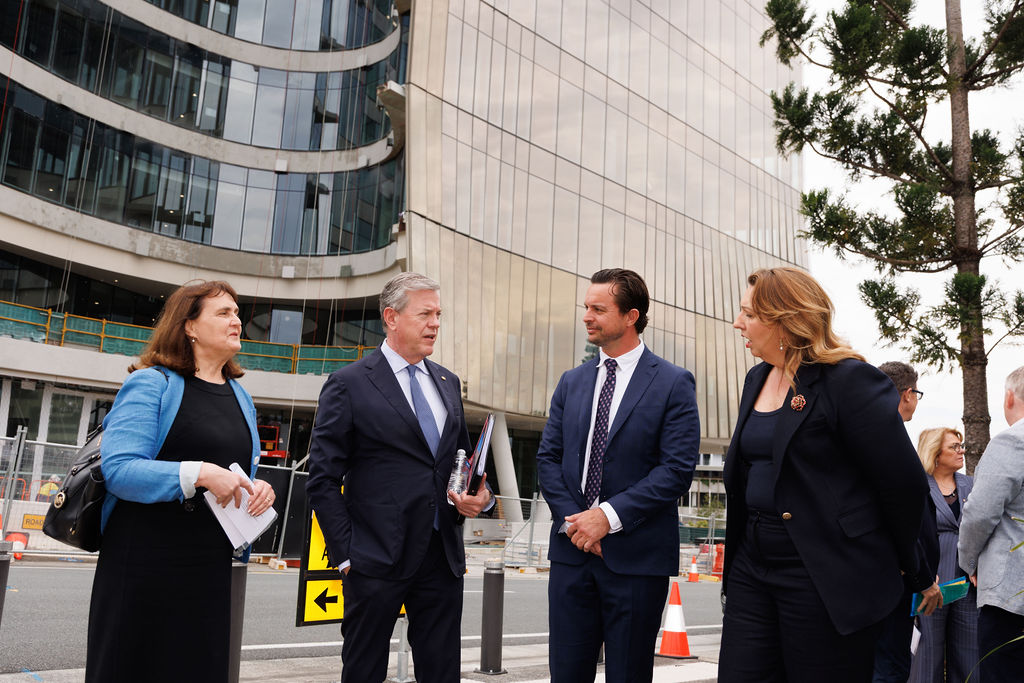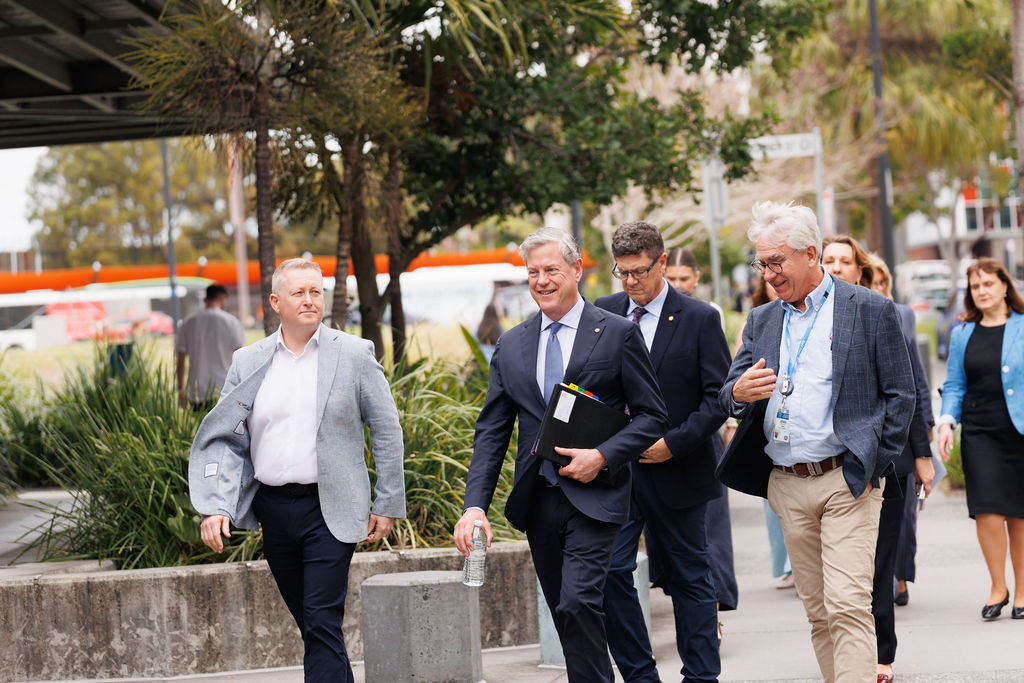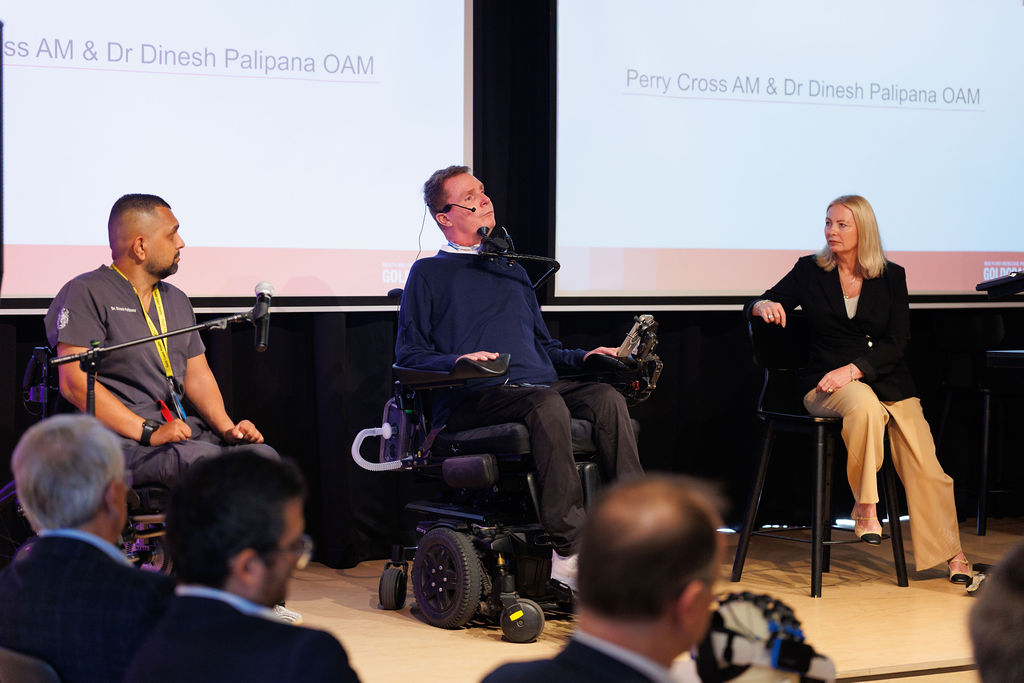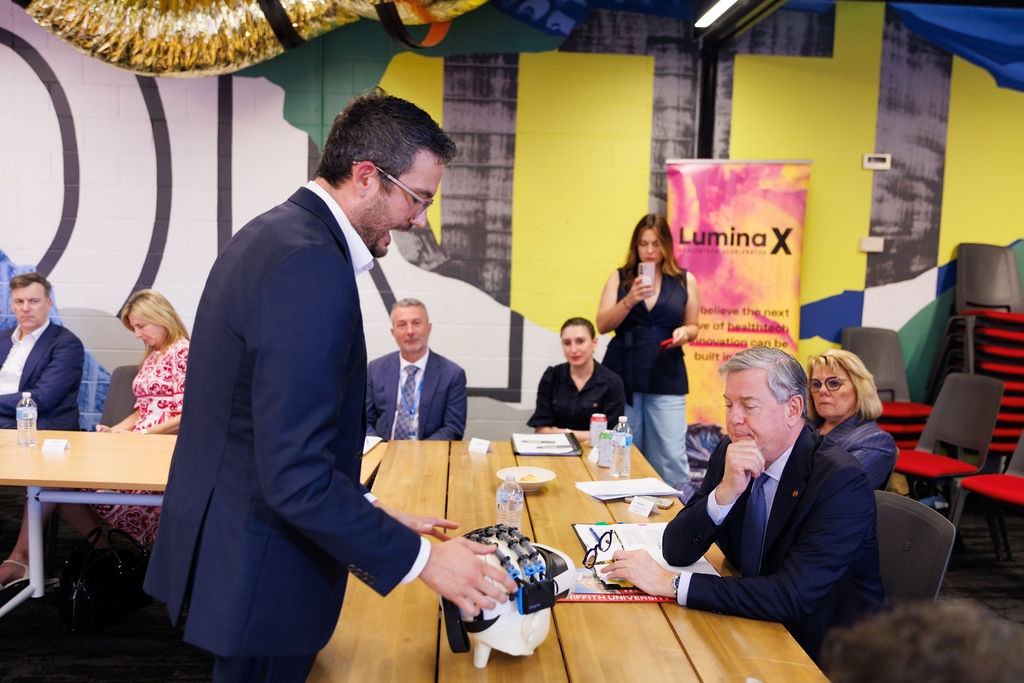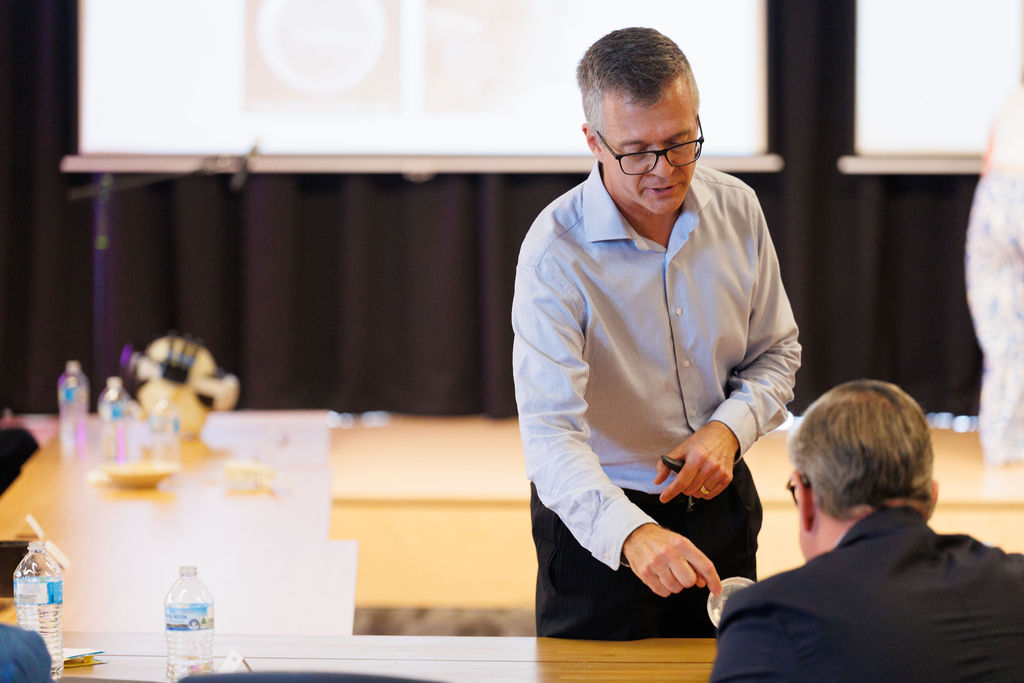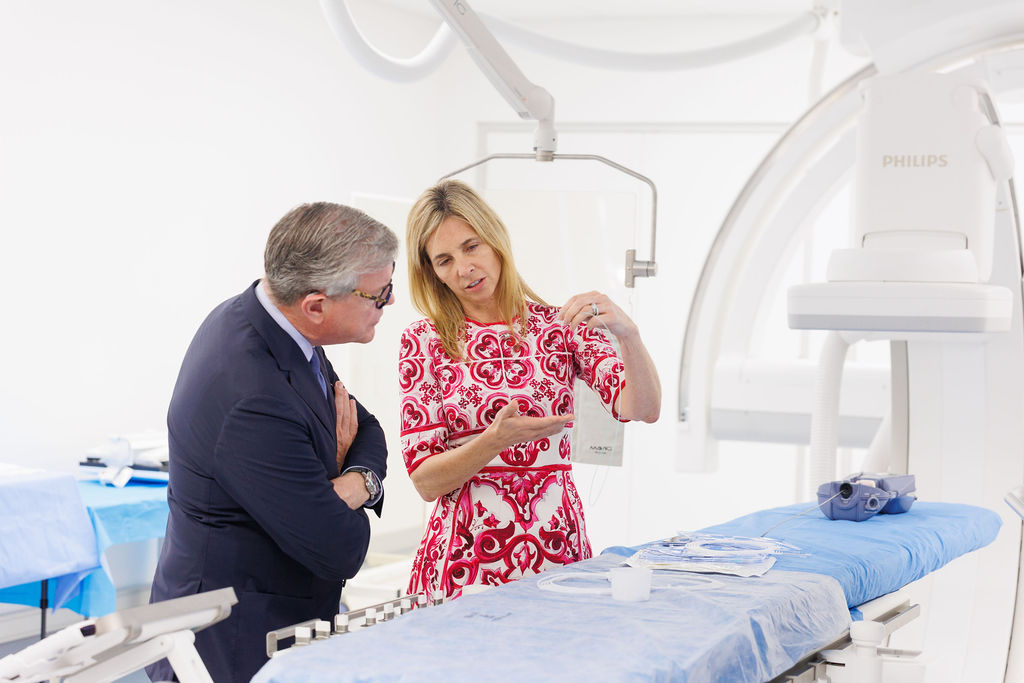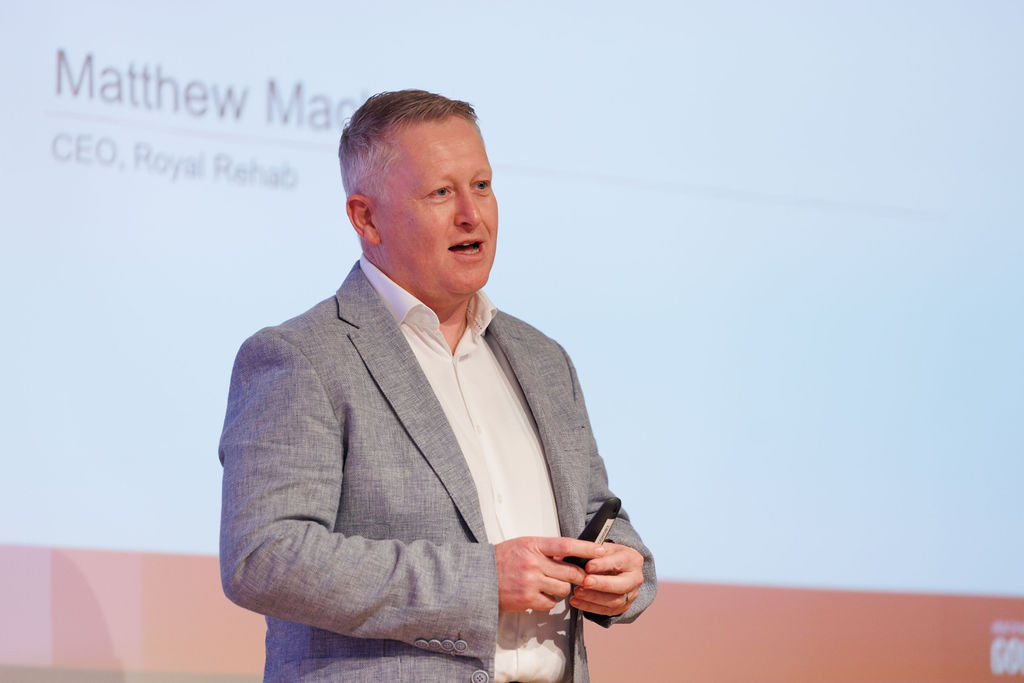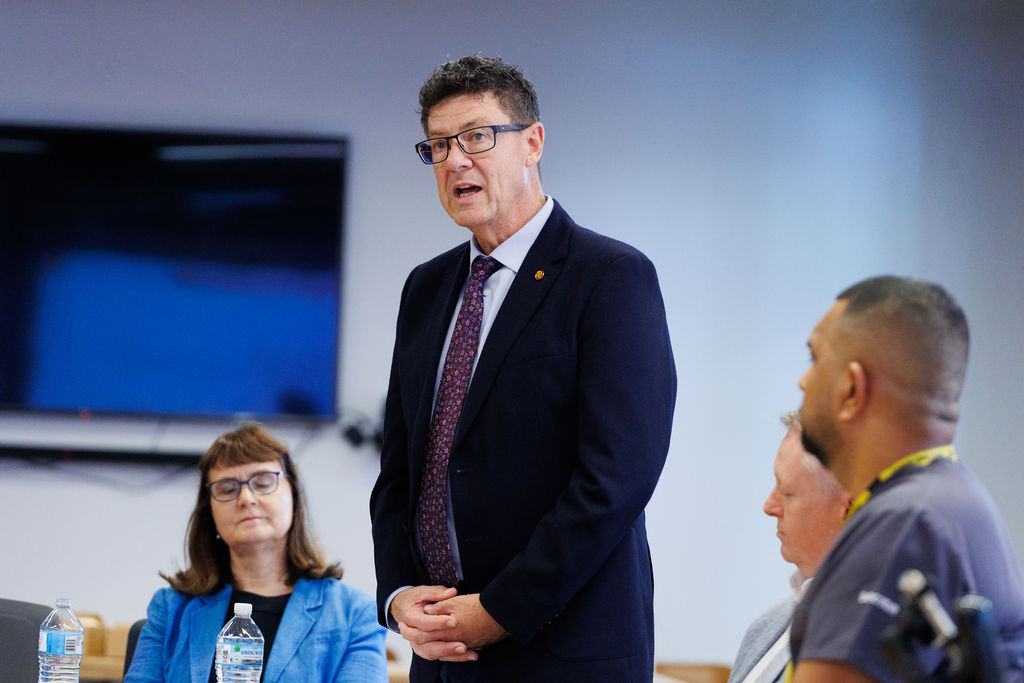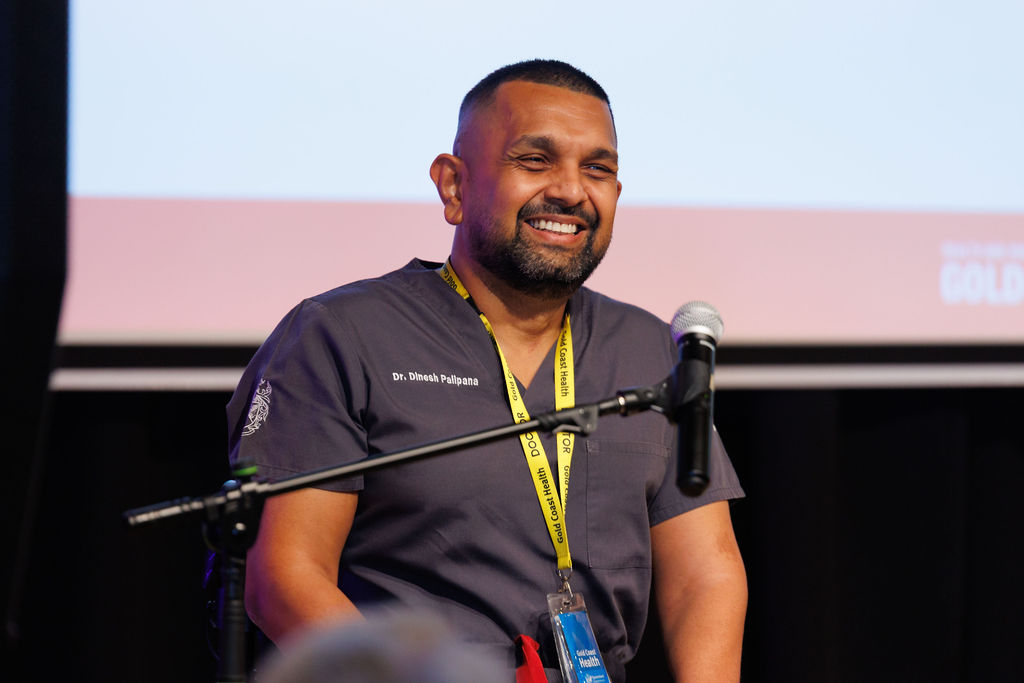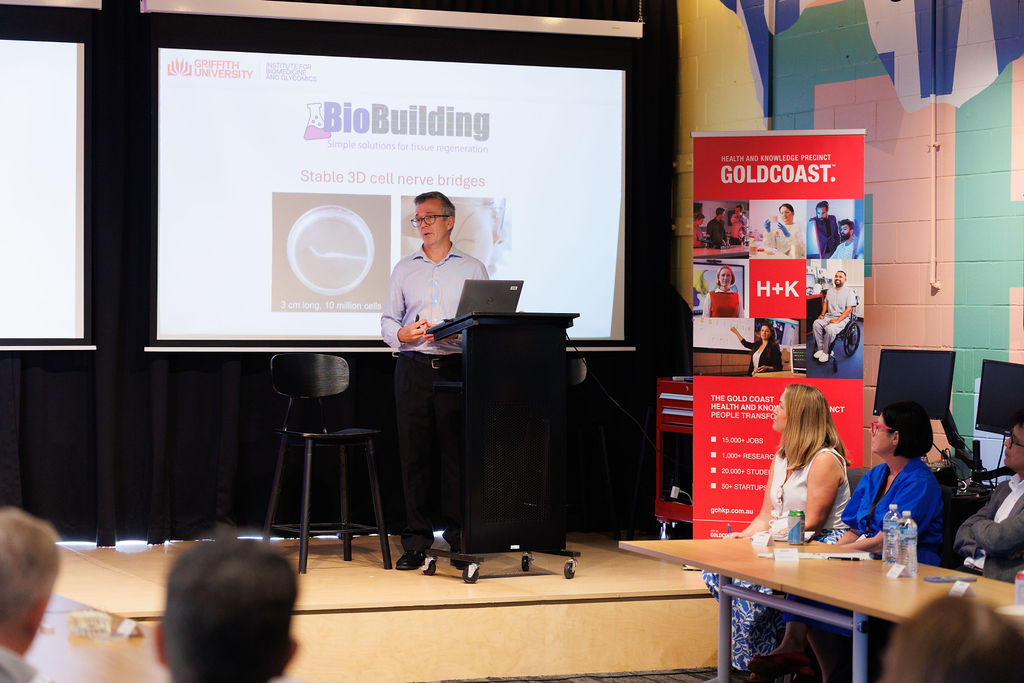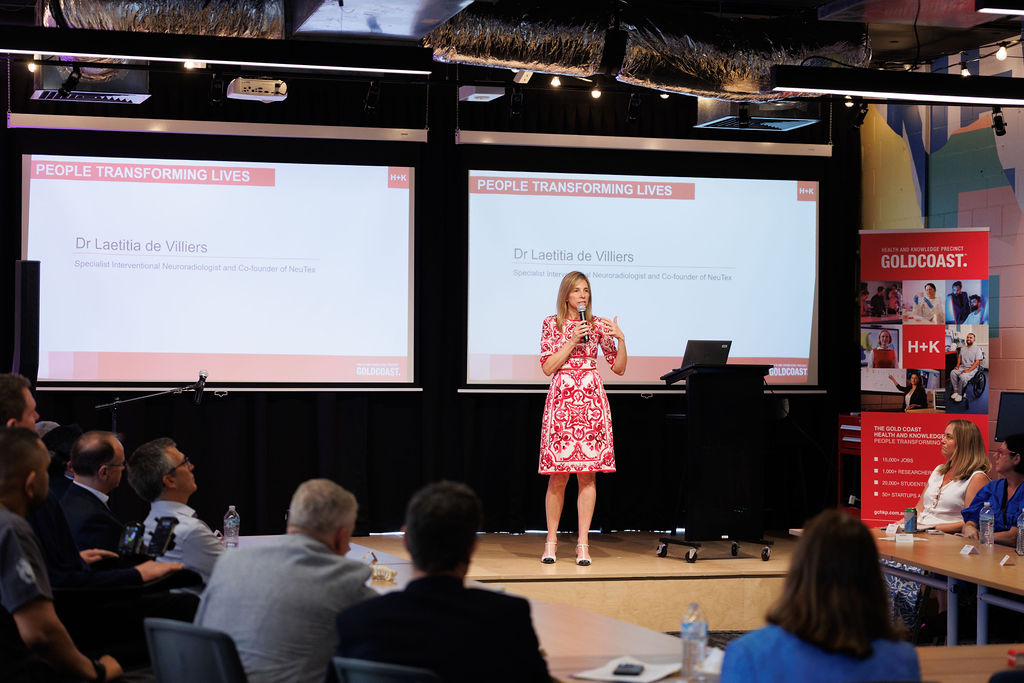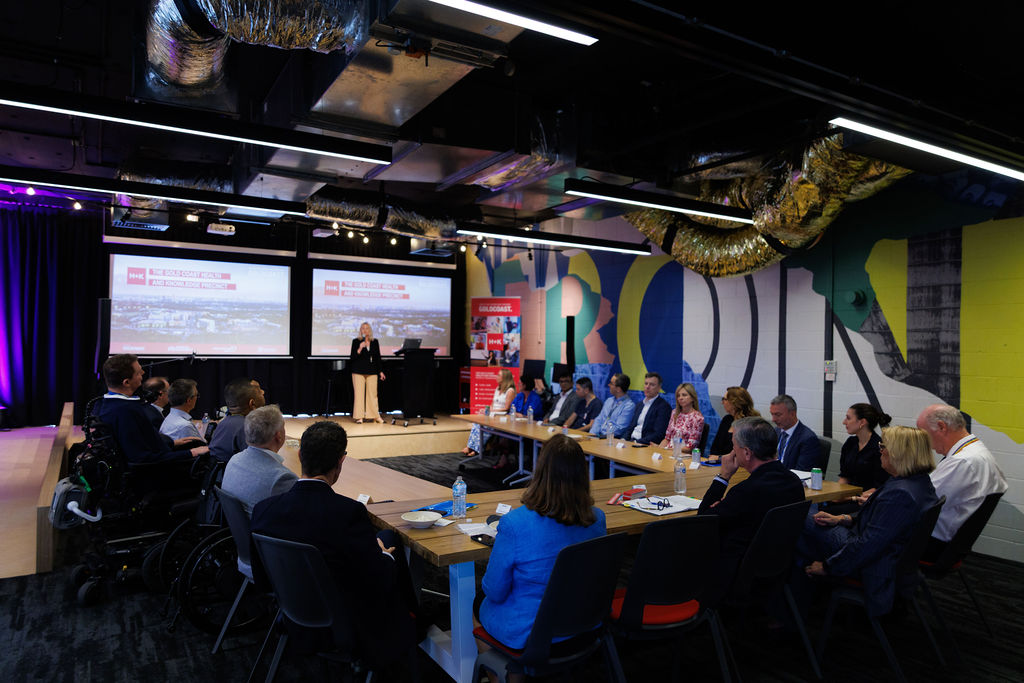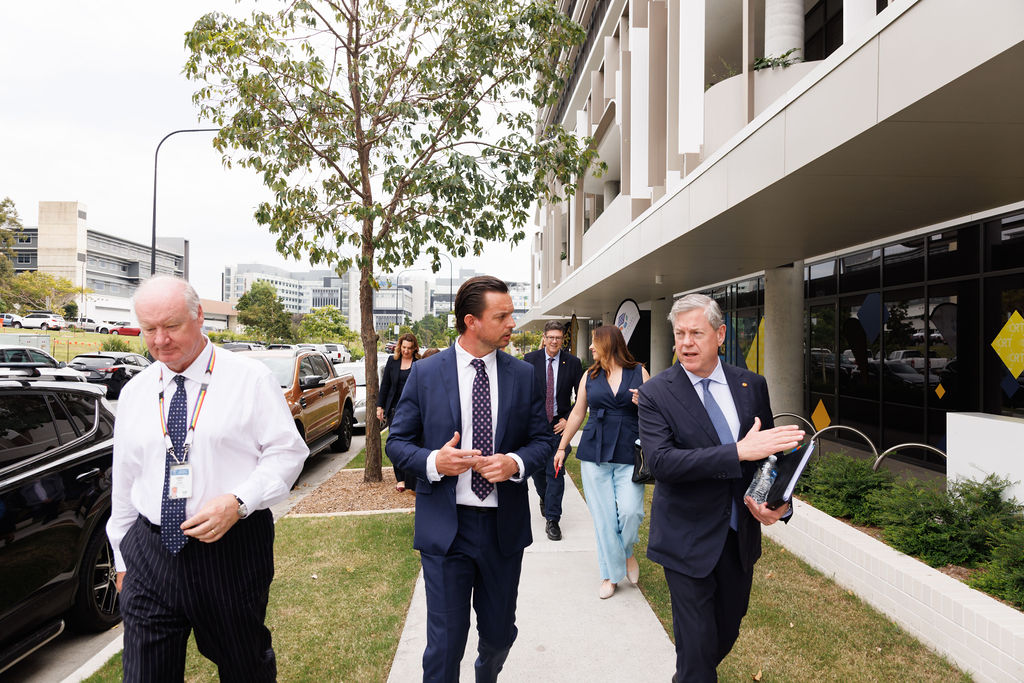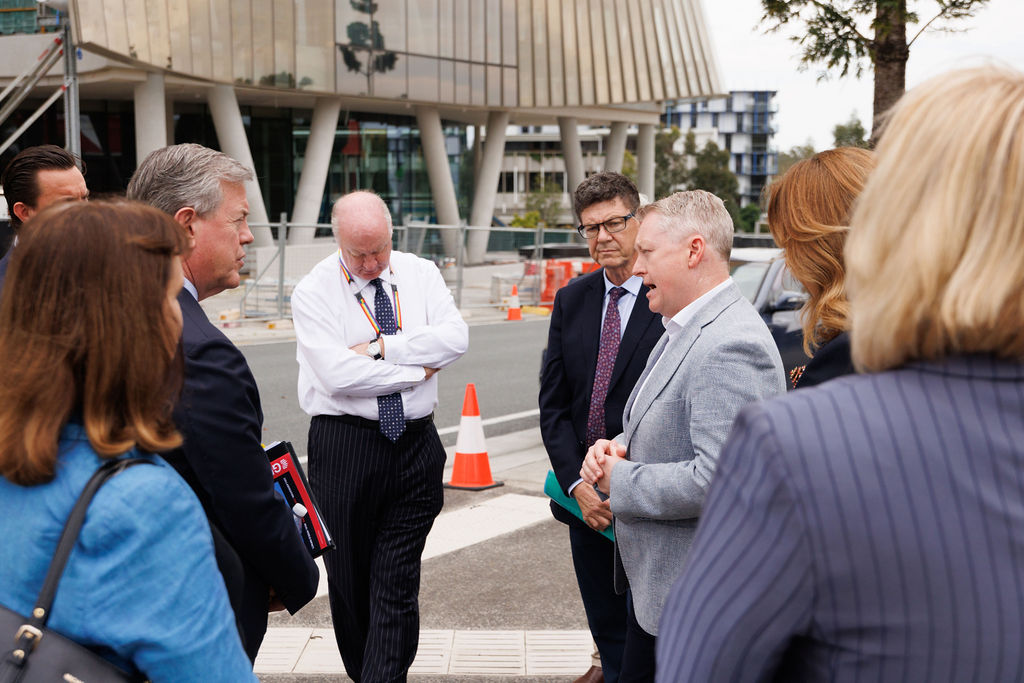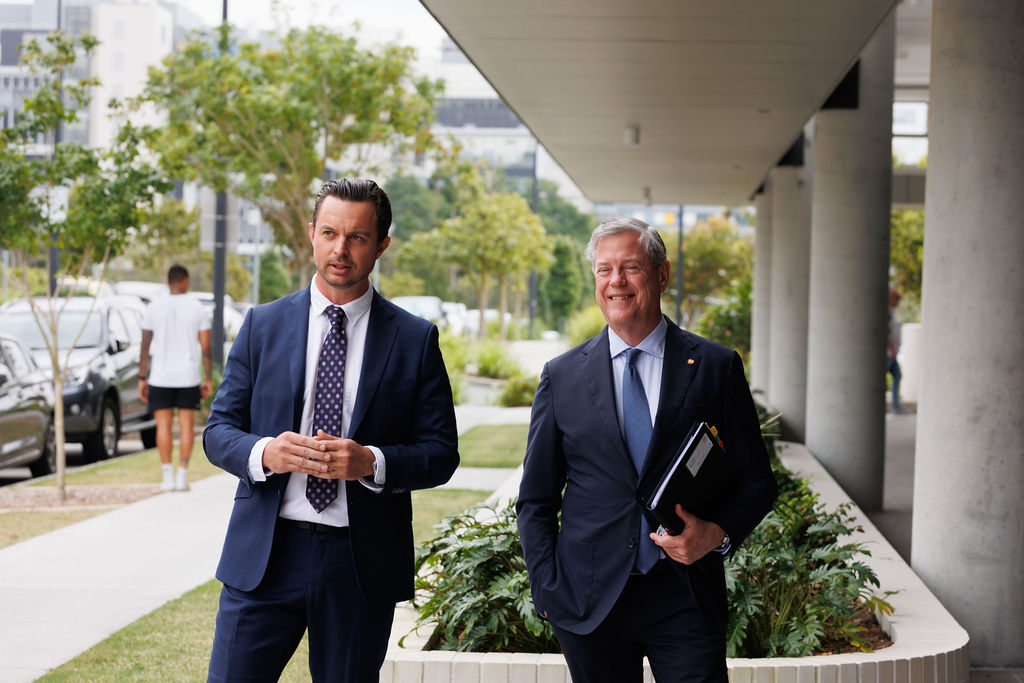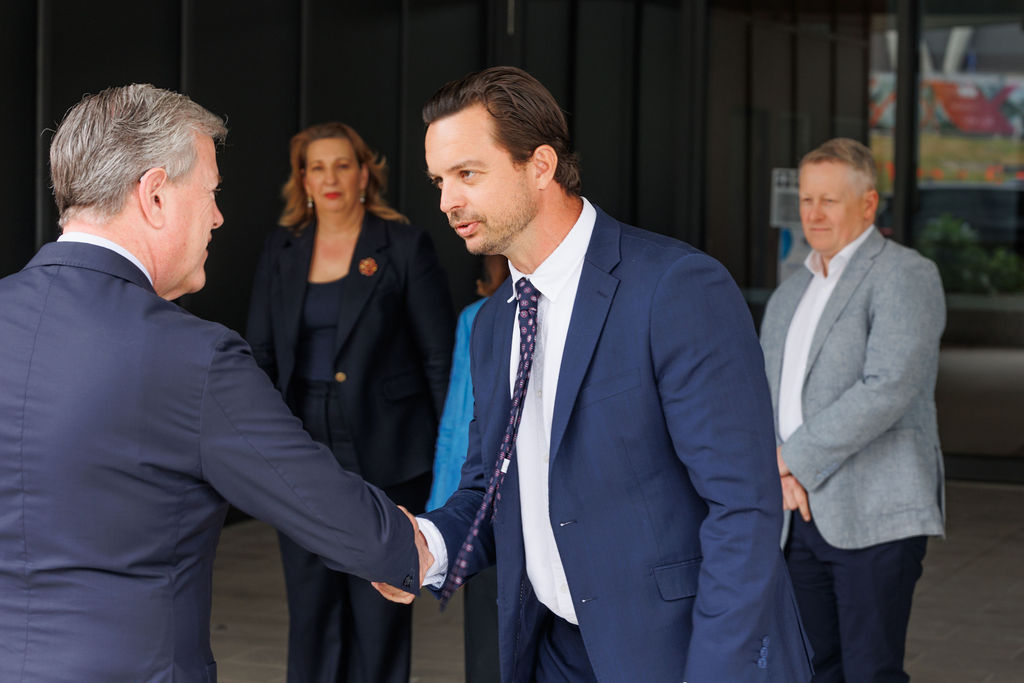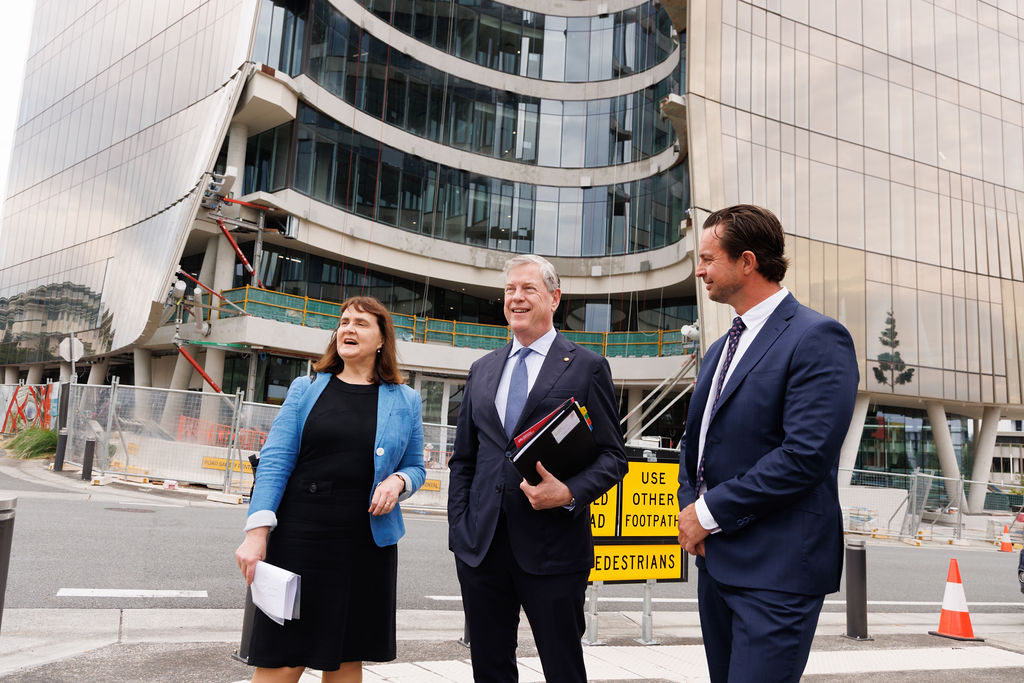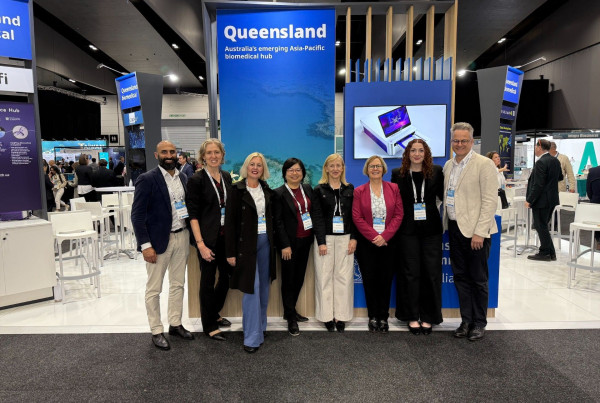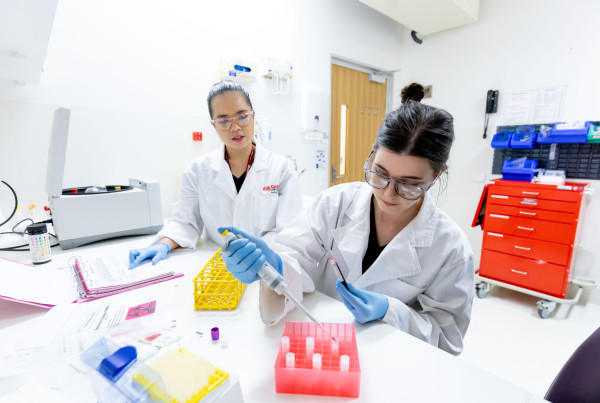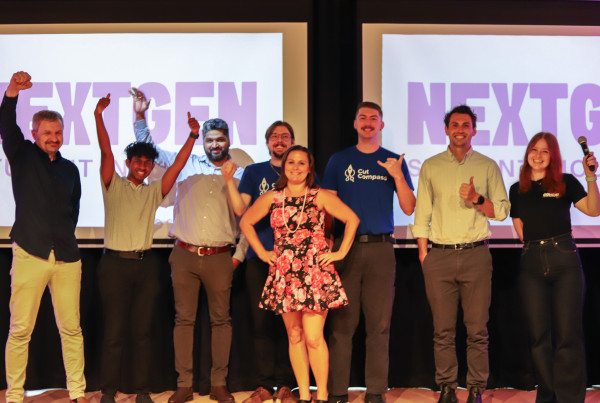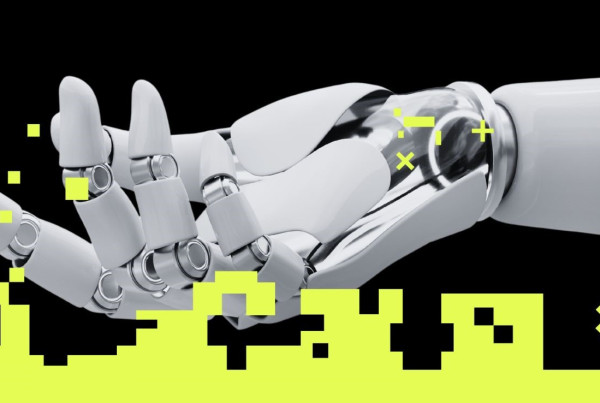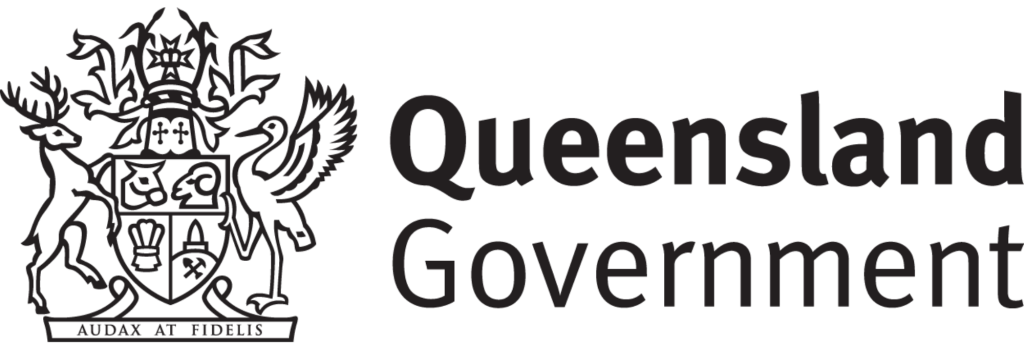Queensland Minister for Health, the Hon Tim Nicholls MP visited the Gold Coast Health and Knowledge Precinct this week to officially open the new H Block at Gold Coast University Hospital (GCUH) and explore some of the precinct’s most promising innovations in spinal injury treatment, neuro-rehab, neuro-trauma interventions, and clinician-led research.
The visit brought together leaders from across government, academia, and health, including Gold Coast Health CEO Ron Calvert, Chair of Gold Coast Hospital and Health Service Professor Cindy Shannon, Griffith University Vice Chancellor Professor Carolyn Evans, and Rob Molhoek MP, Chair of the Queensland Parliament’s Health, Environment and Innovation Committee.
A new era for hospital care
Minister Nicholls began the day by opening H Block, a state-of-the-art clinical space designed to support the continued growth of one of Australia’s busiest hospitals. The new building will expand specialised inpatient services for older adults and patients with complex needs, with a focus on dementia, and enable GCUH to meet the needs of a rapidly growing population.
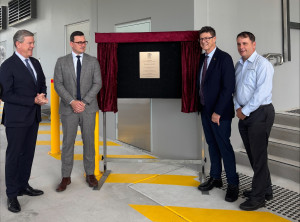
Pictured L-R – Hon Tim Nicholls, Hon Sam O’Connor, Minister for Housing and Public Works and Minister for Youth, Mr Rob Molhoek, MP Southport, Mr Mark Boothman, MP Theodore at the opening of Gold Coast University Hospital H Block
Highlighting spinal injury breakthroughs
Following the opening, the Minister toured key innovation sites across the Precinct. He heard from Professor James St John about a world-first spinal cord injury cell transplantation clinical trial now underway, co-led by Griffith University and Gold Coast Health, and supported by the Perry Cross Spinal Research Foundation.
Perry Cross AM shared his story and vision for a future where paralysis is curable, while Dr Dinesh Palipana OAM offered powerful reflections as a clinician, researcher and disability advocate. Together, they underscored the critical role of collaboration, particularly with people with lived experience, in translating research into real-world outcomes.
Tech-powered rehabilitation and training
The Minister also met Assoc Professor Claudio Pizzolato, who shared how the BioSpine project is combining robotics and human-interface technologies, real-time data, and personalised digital twins to transform spinal cord injury recovery and build scalable digital health solutions.
The visit concluded at NeuTex—the Precinct’s surgical training and robotics hub, where Dr Laetitia de Villiers demonstrated how Gold Coast clinicians are shaping global best practice in neuro-interventional care for stroke and neurovascular conditions, through advanced simulation and international collaboration with leading global medical device companies.
A precinct driving collaboration and care
The visit was a powerful showcase of what’s possible when universities, clinicians, researchers and industry work together. It also provided the opportunity to showcase existing collaboration with Royal Rehab, Australia’s pre-eminent provider of neuro-rehab technologies and disability services. CEO Matt Mackay presented Royal Rehab’s comprehensive range of technologies and highlighted the substantial benefits to patient outcomes, with the exciting opportunity to establish a world-class facility in the precinct’s RDX development.
Rob Molhoek, Member for Southport, is strongly advocating for the GCHKP to capitalise on its leading research and clinical strengths in the neuro field through the creation of a neurorehab and wellness hub – a personal passion following his own ongoing journey of recovery from stroke.
GCHKP continues to position itself as a national centre of excellence for neuroscience, rehabilitation, digital health and clinical innovation.
